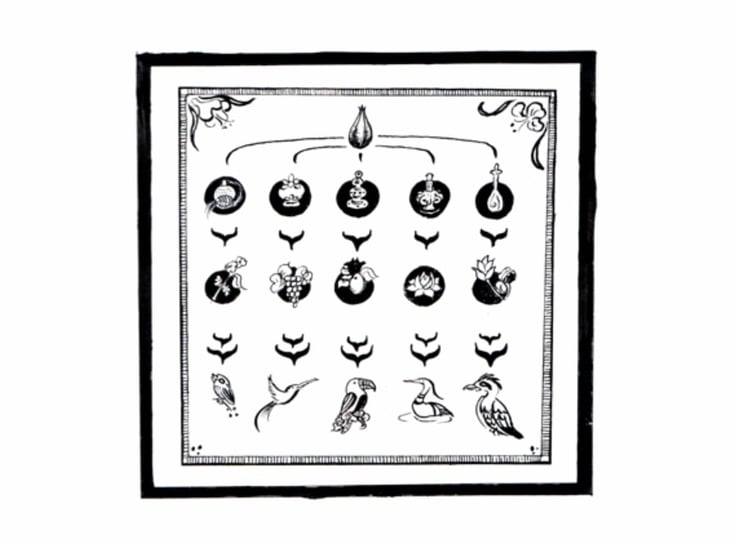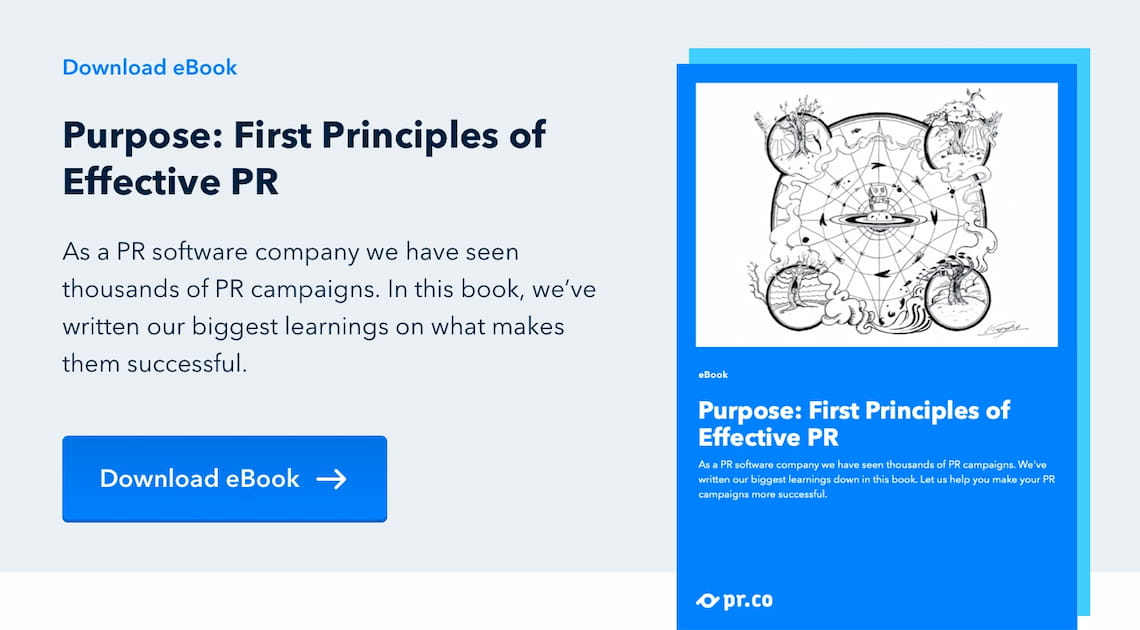As you might have figured out by now, sending large amounts of content out into the worldwide web doesn’t automatically result in an engaged following. To get your content delivered to the right people, you need to pick your audience's brain to find a message that resonates with them. Here's how you can adjust your communication strategy to achieve more engagement.
.jpg?width=736&name=354641-3.3-ccbead-original-1589299282%20(1).jpg)
This article is an excerpt from pr.co ’s book Purpose: First Principles of Effective PR. Download the entire book, for free, here.
Care about quality, focus on resonance
You can segment your audience into individuals if you want, which is a little overkill. You do need to identify your various audiences, though, and subsequently, identify what their needs are. You can’t put a square peg in a round hole. Resonance works a bit like that, too. A message won’t resonate with the wrong part of your audience. You need to learn which shape fits where.
So, how (not) to do it?
Although we pretend to be fully rational actors, in the end, human beings are emotional creatures. It’s emotion that can get people to love you, and it’s emotion that can make them avoid your brand at all costs. Fortunately, there’s a whole range of emotions that govern action in different settings. You can be funny, empathetic, or even provocative on purpose. The trick to triggering the desired response is matching your tone and topics to the people you want to reach.
Some of the biggest emotive triggers that will make people click on and continue reading your content revolve around the fear of missing out, secrets, passion, and trust. You need to evoke these emotions while weaving the benefits of your brand or product into every post. And you need to do it in a way that comes across as authentic. Evoking emotion is one of the most powerful communication tools around, so it should be used strategically and with care.
Which sounds hella hard, but it becomes a lot easier once you’ve properly defined your purpose. Use your purpose to define your message. Then add passion and emotion, and voilà! You get resonance.

Creating compelling copy that’s still authentic may sound like an impossibly daunting task, but it’s not as hard as it sounds. We cannot stress the importance of defining your purpose enough. Start there. And do it properly. Don’t forget about outlining your audience either, of course. Since you’re targeting your audience in specific segments, you may have more messages to send. You need to be aware of every single type of communication at your disposal and adjust your strategy to the needs of your different audiences.
Use existing knowledge
Once you’ve figured out your purpose, audience, and message, it becomes a lot less scary to take a leap of faith and start sending out messages. Then you can use metrics to determine what works best for which audience. Yes, we’re talking testing. One of the beauties of the startup boom is the plethora of tools that make it possible to test everything about a particular message. Email sending tools can track open and click rates, Twitter and Facebook provide stats on reach and engagement, and you can track your site’s basic traffic with tools like Google Analytics. There are even tools that can tell you emails are being opened in real-time.
Media’s no different
Tools are a great way to understand what your audience values. This knowledge, in turn, can make your PR campaign sink or swim. See, journalists write for a particular audience. They’re the gatekeepers between events, businesses, products, and the rest of the world. It’s their job to feed their readers information and scoops they will find interesting. Journalists can’t afford to be scooped by the competition. Knowing in advance what their audience wants to read makes knowing how to approach them a whole lot easier.
Conclusion
Stats on email openings, page views, and click-through rates can give you important insights into what intrigues and resonates with your audience. If you don’t want to take a big gamble straight away, you can start testing with small subsets of contacts to see how people respond, and if they respond at all.
The key to using all this intel to your advantage is uncovering patterns. Give it some time and you might discover that your audience engages more at specific moments. Maybe you notice that an informal hashtag resonates better than a dull, standard one. Maybe you see an increase or decline in attention after you posted a tweetstorm. You might even find out some investors never read your email updates.
Give it some time. Then adjust your communication strategy to make sure you’re nailing it.


Sjors Mahler is the Commercial Director at pr.co. He’s worked with PR and communications teams for 9 years and has organized dozens of meetups and events for the Amsterdam PR community. Sjors has an MSc in Persuasive Communications and specializes in branding, sales strategy, and inbound PR.. Connect on LinkedIn or send an email






